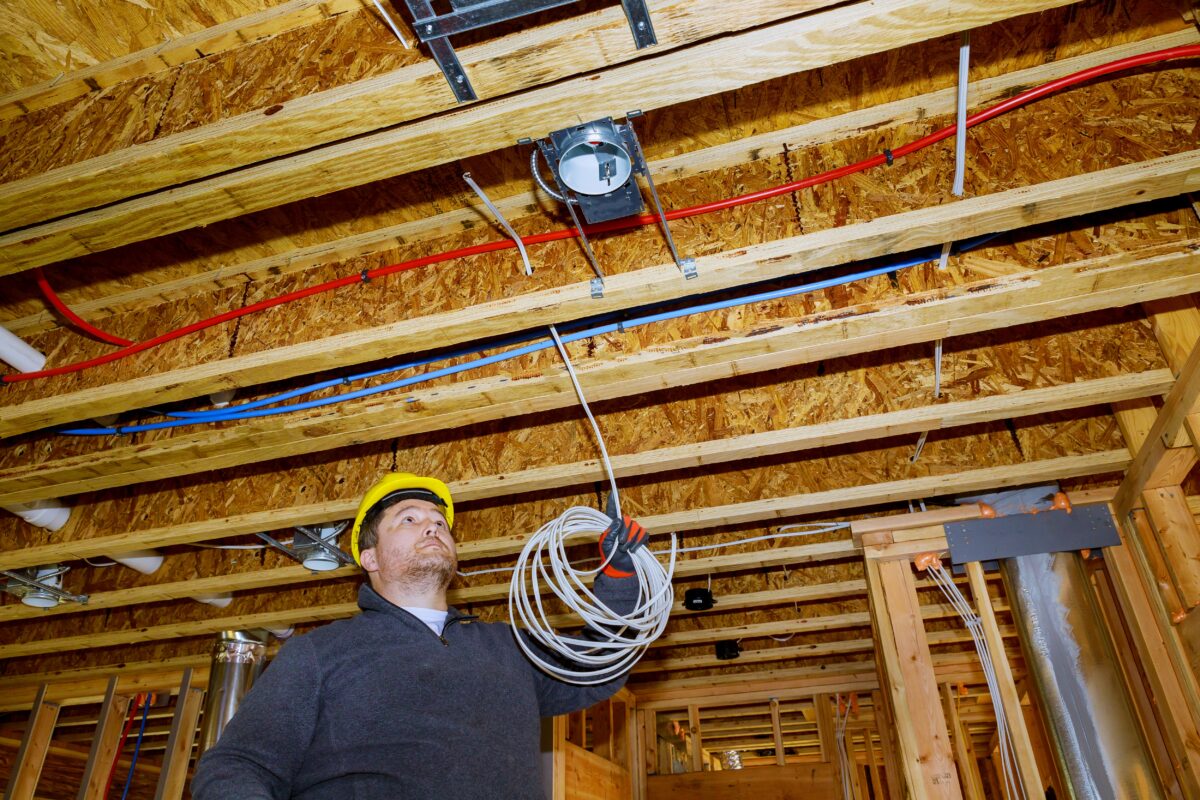How To Update Electrical Wiring In An Old House

The downside of buying an older house is that sometimes you may need to spend more money on maintenance or updates. This is especially true regarding safety issues like an old electrical system
Many home buyers prefer a house with a bit of history instead of a newer-built one. An old home can be full of charm and wonder. Original wood floorboards, detailed molding, period-specific touches that can ignite a conversation, the list goes on and on.
Understanding how to update electrical wiring in an old house will help you assess, fix, and maintain this critical part of your older home.
Before we get into how to update the electrical wiring in your old house, let’s look at whether you need to. If you are a homeowner with a historic home, you may need to replace your outdated wiring system. If everything is working and up to code, you may not.
The second reason has to do with selling or renting your property. When you find a potential buyer or renter, an inspection must be done before you can seal the deal. This involves a licensed electrician reviewing all the wiring in your home to make sure everything is up to code.
Suppose the electrician finds outdated wiring (often in older homes). In that case, you might fail an inspection and can only sell or rent the house once the new wiring is installed.
- Is your wiring outdated or not up to code? For two key reasons, having up-to-date wiring that meets current wiring codes is critical. The first is safety. U.S. electrical codes created by the National Fire Protection Association (NFPA) are intended to prevent fires.
- Do your systems use aluminum wiring? Aluminum wiring presents several dangers, such as loosening over time, overheating, and causing fires. If the electrical system in your older home has aluminum wiring, it might be time for rewiring.
- Are your amps able to provide your home with enough power? Most older houses use a standard 60 amps or 100 amps, but modern homes require 200 amps. If your home doesn’t have 200 amps, it might be time to call an electrician.
- Do you frequently experience electrical problems? Many signs of the need for new wiring in an old home can be observed daily. Burning smells, discoloration of outlets and switches, flickering lights, and frequent circuit breaker trips are some signs homeowners can look out for.
4 Steps To Update Wiring In An Old House
Now that you know the signs, let’s dive into the process of rewiring an old house. This consists of reviewing all your electrical systems, understanding your local codes, making a list of your desired electrical projects, contacting a reputable electrician, planning for demolition and reconstruction, and finding hardware that matches your home.
1. Review All Of Your Electrical Systems
List all your electrical systems and where and how you use them. Why? You can’t tackle a project like rewiring an old house without knowing exactly what you are getting into. Here are some things you should be sure to cover.
- Inspect your circuit breakers: Look for rust or signs of pest activity. Ensure all circuit breakers flip on and off easily and don’t get stuck.
- Test your GFCI outlets: All outlets near a water source should be protected by ground fault circuit interrupt (GFCI). Press the test button to make sure all GFCI outlets are safe.
- Test all other outlets: Buy a cube tester and plug it into each outlet in your home. A light will display that corresponds with specific wiring issues. Also, check for outlet tightness. If it wiggles, that isn’t good. Be sure to do these tests on your outdoor outlets as well.
- Look at all the wiring you can see: Look over any wiring you can see, like in the basement or attic. Make sure there are no cracks or splits.
- Test your voltage: If certain appliances are acting weird, short circuit, or lights are flickering, it might be a voltage issue. Check the power at each outlet with a voltmeter. For standard 120-volt outlets, you might see it indicate between 110 and 130 volts. That’s normal. If the volt readings are outside this range, you have a problem to address.
- Look at your extension cords: Ensure they are free of cracks or splits. Also, ensure the extension cords you use for power tools have the correct amperage rating.
2. Understand Your Local Codes
It’s essential to understand your local codes for electrical work, such as how many outlets you can have in each room and what type of wire you need to use. This ensures a safe rewiring of your old house and passing necessary inspections.
3. Make A List Of Desired Electrical Projects
Make a list of any projects you need completed before finding an electrician, such as:
• Upgrading the main service electrical panel
• Running wires directly from a circuit breaker to an outlet
• Spacing outlets at 6 – 8 feet apart to avoid extensions
• Installing grounding wires and three-prong outlets
• Adding ground-fault circuit interrupters in the kitchen, bathrooms, and outdoors
Electricians that you call for a quote need to know the scope of work before telling you how much it will cost. They also need this to determine when they can get the job done and how long it will take.
4. Contact A Reputable Electrician
Going the DIY route is an excellent way to save money. Still, it’s best to hire a reputable electrician to complete your electrical rewiring. Electricians are highly trained to get work done safely and effectively.
They are also trained to make sure that they protect your existing infrastructure.
At Streb Electric we are electricians that understand older homes.
Streb Electric is an electrical services company based in Eastlake, Ohio, servicing Eastern Cuyahoga, Lake and Geauga Counties. We offer the personal service of a small, family-owned business, with the professionalism and wide range of services of a large company, making us the perfect choice for electrical projects of all sizes. Contact us today to get your older home safe and up to code.







